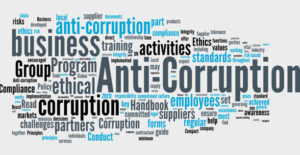Child labor is a violation of children’s rights and a significant obstacle to their development and well-being. To combat this issue, countries around the world have enacted legal frameworks designed to protect children from exploitation and ensure their right to education and a safe childhood. However, the effectiveness of these legal frameworks varies widely, and enforcement remains a challenge in many regions. This blog analyzes the legal frameworks addressing child labor, exploring their strengths, weaknesses, and the factors that influence their effectiveness.
International Legal Frameworks
1. ILO Conventions: The International Labour Organization (ILO) has established key conventions that form the basis of international legal standards on child labor. The Minimum Age Convention (C138) sets the minimum age for employment, while the Worst Forms of Child Labour Convention (C182) calls for the immediate elimination of the most hazardous forms of child labor. These conventions have been widely ratified by countries around the world, creating a global legal standard against child labor.
2. The United Nations Convention on the Rights of the Child (CRC): The CRC is another critical international legal instrument that addresses child labor. It outlines the rights of children, including the right to be protected from economic exploitation and hazardous work. The CRC also emphasizes the importance of education and the role of the state in ensuring that children are not forced into labor.
3. Regional Agreements: In addition to global conventions, regional agreements also play a role in combating child labor. For example, the African Charter on the Rights and Welfare of the Child and the European Convention on Human Rights include provisions that protect children from exploitation. These regional frameworks complement international agreements and provide additional mechanisms for addressing child labor.
National Legal Frameworks
1. National Child Labor Laws: Most countries have enacted laws that prohibit child labor, often setting a minimum age for employment and regulating the types of work that children can perform. These laws vary by country, reflecting differences in economic development, cultural practices, and labor market conditions. In some countries, child labor laws are part of broader labor codes, while in others, they are standalone pieces of legislation.
2. Education Laws: Education laws are closely linked to child labor laws, as they mandate school attendance and aim to keep children out of the workforce. Compulsory education laws require children to attend school until a certain age, which helps prevent child labor by ensuring that children are in school rather than working. However, the effectiveness of these laws depends on the availability and quality of education, as well as the ability of families to afford school-related expenses.
3. Enforcement Mechanisms: The effectiveness of child labor laws depends largely on the strength of enforcement mechanisms. This includes the presence of labor inspectors, the ability to prosecute violators, and the imposition of penalties for non-compliance. In many countries, however, enforcement is weak due to limited resources, corruption, or lack of political will. As a result, child labor laws may exist on paper but have little impact in practice.
Factors Influencing Legal Effectiveness
1. Economic Conditions: Economic conditions play a significant role in the effectiveness of child labor laws. In countries with high levels of poverty and unemployment, families may feel compelled to send their children to work, regardless of legal prohibitions. Economic incentives, such as conditional cash transfers or social protection programs, can help reduce the economic pressures that drive child labor and improve the effectiveness of legal frameworks.
2. Cultural Practices: Cultural norms and practices can also influence the effectiveness of child labor laws. In some cultures, child labor is seen as a normal part of childhood, and laws prohibiting it may be ignored or resisted. Public awareness campaigns and community engagement are essential for changing attitudes and ensuring that legal protections
are respected and enforced. By involving community leaders, educators, and parents in efforts to combat child labor, legal frameworks can be more effectively implemented in a culturally sensitive manner.
3. Government Commitment and Resources: The effectiveness of child labor laws also depends on the commitment of governments to enforce them. This includes allocating sufficient resources for enforcement, such as funding for labor inspectors, judicial processes, and social services. In countries where governments are committed to eliminating child labor, laws tend to be more robust and enforcement more consistent. Conversely, in countries where child labor is not a priority, laws may be weak or poorly enforced.
4. International Pressure and Collaboration: International pressure, including from human rights organizations, foreign governments, and trade agreements, can influence the effectiveness of child labor laws. For example, countries that wish to engage in trade with regions that have strict labor standards may be motivated to strengthen their child labor laws and enforcement mechanisms. Collaboration with international organizations, such as the ILO, can also provide technical assistance and resources to improve legal frameworks and enforcement.
Conclusion
Legal frameworks are essential tools in the fight against child labor, providing the structure and standards needed to protect children from exploitation. While international and national laws have made significant progress in addressing child labor, challenges remain in ensuring their effectiveness. Factors such as economic conditions, cultural practices, government commitment, and international collaboration all play a role in the success of these legal frameworks. To truly eradicate child labor, a multifaceted approach is needed that combines strong legal protections with effective enforcement, public awareness, and economic support for vulnerable families. By addressing these challenges, we can create a world where every child is free from the burdens of labor and able to enjoy a safe, healthy, and fulfilling childhood.











